Does Gold Rust?
15/11/2024Daniel Fisher
Free & fully insured UK Delivery. Learn more
Secure & flexible payments. Learn more

Buyback Guarantee Learn more
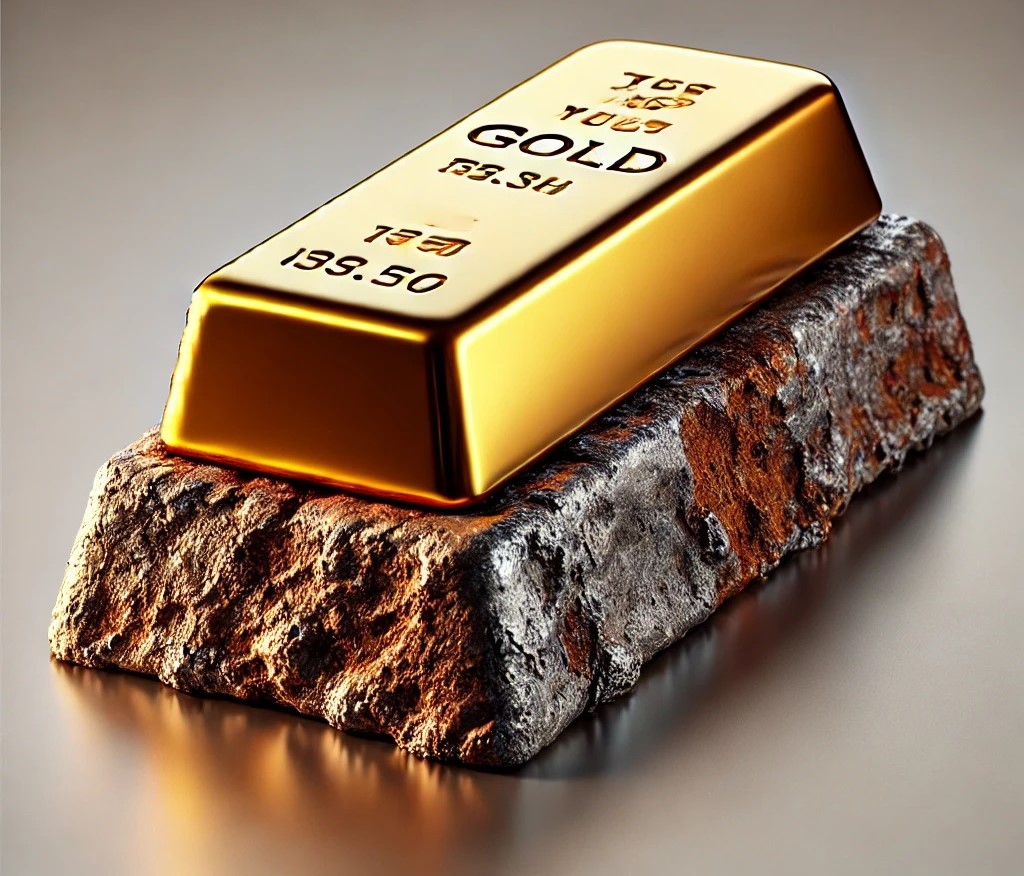
Gold is a highly sought and regarded precious metal, not just for its beauty but for its durability and resistance to rust and corrosion. While many metals rust when exposed to air and moisture, gold jewellery and items often remain untarnished, which adds to their appeal. But does gold actually rust? And why do some people notice tarnish, stains, or even red spots on their gold pieces?
Understanding how gold reacts—or doesn’t react—with the elements can help you make the most of your jewellery and gold bars or coins. In this article, we’ll explain the science behind why gold doesn’t rust, explore what might cause tarnishing or discoloration on certain types of gold, and provide tips on how to care for your gold items to keep them looking their best.
Rusting is a natural process that affects many metals, often leading to visible damage or weakening of the material over time. However, not all metals rust, and understanding why some do while others don’t is essential for choosing metals for specific uses, like jewellery or construction.
Rusting is a specific type of corrosion that happens only to iron and iron-based metals, such as steel. When iron is exposed to oxygen and moisture, it undergoes a chemical reaction called oxidation. This reaction forms iron oxide, or what we commonly call “rust.” Rust is usually a reddish-brown substance that flakes off over time, weakening the metal underneath.
Corrosion, on the other hand, is a broader term that refers to the general breakdown of metals due to chemical reactions with their environment. Different metals corrode in different ways: aluminium may form a white oxide layer, while copper famously develops a greenish patina. Unlike rust, which typically causes visible flaking, some types of corrosion create a protective layer on the metal’s surface, preventing further damage.
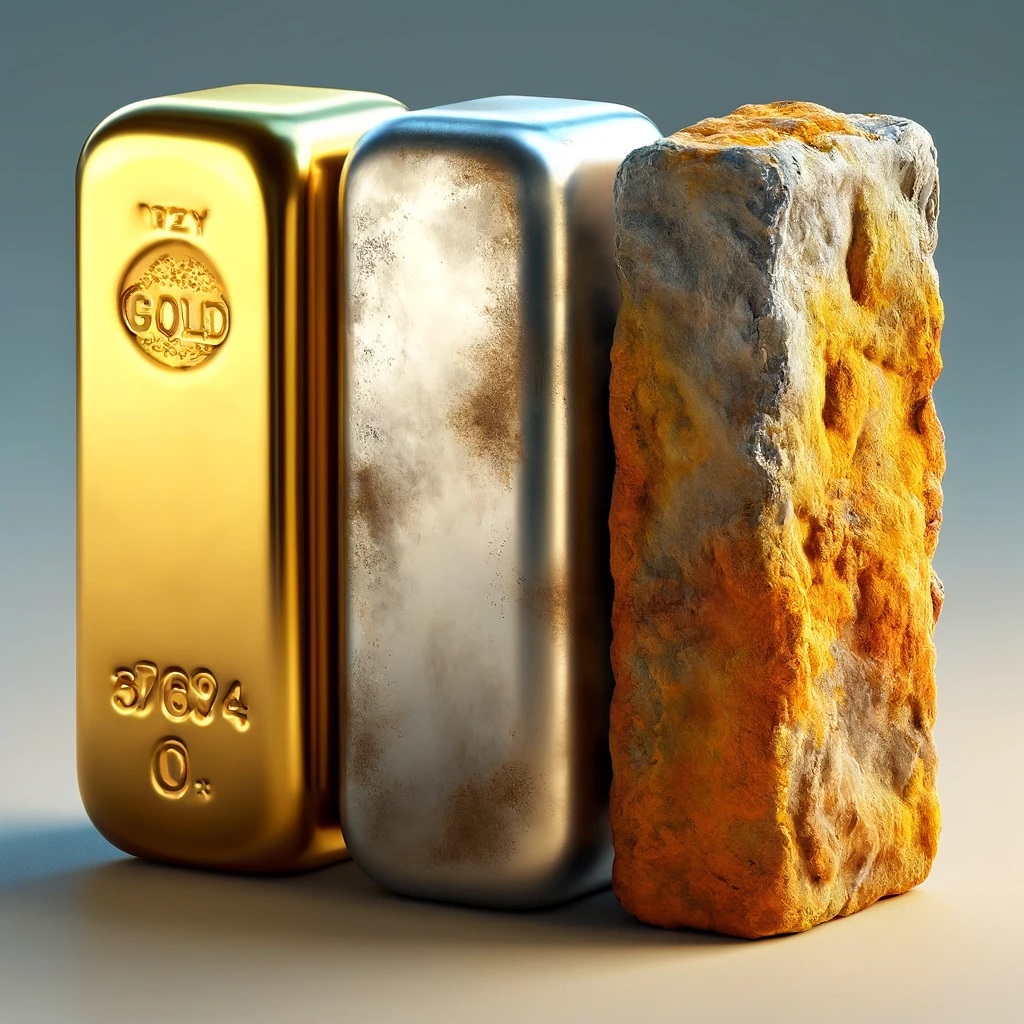
Whether a metal will rust or corrode depends on its chemical composition. Metals such as lithium are highly reactive to oxygen, requiring it to be coated in oil to protect it from moisture and oxygen. Topping the table for the most reactive metal is Caesium which reacts instantly to oxygen in the air.
Other metals, like aluminium and copper, react more slowly, developing a protective oxide layer instead of flaking. This layer helps protect the underlying metal from further corrosion. For this reason, copper is a popular choice when constructing water pipes.
Gold, however, is a noble metal, meaning it’s extremely resistant to chemical reactions that lead to rusting and corrosion. Noble metals like gold, platinum, and silver are said to have no reaction with oxygen, so they remain stable and maintain their shine over time.
Gold is known for its lasting beauty and resistance to rust, but is it truly impervious to all types of corrosion? While pure gold doesn’t rust in the way other metals do, certain factors can cause some forms of gold, particularly gold alloys, to show signs of wear or discoloration.
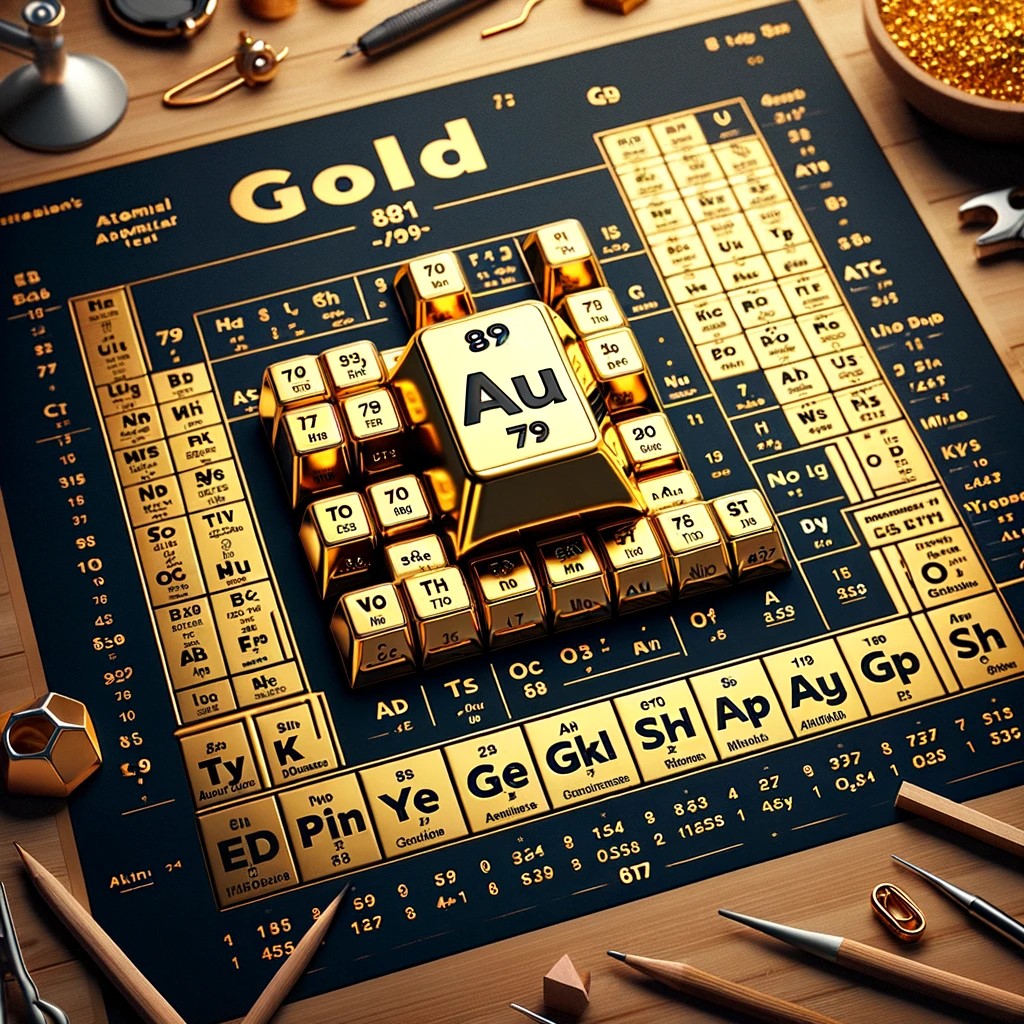
Rusting is a process that occurs when metals, particularly iron and iron-based metals, react with oxygen and moisture to form rust—a reddish-brown, flaky substance that damages the metal. Pure gold, however, is a “noble metal,” meaning it’s highly resistant to chemical reactions that cause rust. This is because gold atoms are incredibly stable and don’t bond easily with other elements, including oxygen. As a result, pure gold won’t rust or break down when exposed to air, water, or other environmental factors.
For this reason, pure gold, or 24-karat gold, is ideal for items that are meant to last and retain their appearance over time, such as jewellery, coins, and high-end electrical components. Unlike iron, which corrodes relatively quickly, gold remains untarnished and maintains its vibrant colour without needing special treatments to protect it.
Gold’s resistance to rust and corrosion isn’t just a result of its lack of reactivity—it’s also due to several other unique physical and chemical properties. For example, gold is highly malleable and ductile, meaning it can be shaped and stretched without breaking. This makes it suitable for intricate jewellery designs and fine detailing.
Additionally, gold is unaffected by most acids and chemicals, which would typically degrade or corrode other metals. The one notable exception is aqua regia, a mixture of nitric and hydrochloric acids, which can dissolve gold. However, in everyday environments, pure gold is resistant to tarnishing, discoloration, and breakdown, making it a valuable and reliable choice for both ornamental and industrial uses.
While pure gold is resistant to rust and corrosion, most gold jewellery and some gold coins aren’t made from 100% gold. Instead, they’re crafted from gold alloys, which are mixtures of gold with other metals like copper, silver, or nickel. These other metals are added to strengthen the gold, adapt its properties for the desired task, or give it different colour tones. But they can also make the gold more vulnerable to tarnishing or discoloration.
For instance, when copper is mixed with gold to create rose gold, it adds a beautiful pinkish hue but also makes the alloy more susceptible to tarnishing, as copper oxidizes over time. Similarly, white gold contains metals like nickel or palladium that may react with air or moisture, especially if they aren’t rhodium plated. This can result in a dull appearance or, in some cases, slight discoloration.
Copper and silver alloys have been used for decades by the Royal Mint to manufacture their flagship 22-karat gold Sovereign coin. The trade-off between the slight increase in the chance of tarnishing is outweighed by the alloy creating a coin far more resistant to scratches than 24-karat coins. Interestingly, the 2025 Sovereign will be the last one minted in rose gold as the Mint move back to a more yellow gold tone for the future.
In summary, while pure gold doesn’t rust or corrode, the presence of other metals in gold alloys can make them more reactive, leading to tarnishing or discoloration under certain conditions. Fortunately, with proper care, these effects can be minimized, helping your gold items maintain their brilliance and beauty for years to come.
Free ultimate guide for keen precious metals investor
Gold is celebrated for its resilience, but that doesn’t mean all gold items are completely immune to discoloration. While pure gold itself won’t tarnish or rust, certain factors can cause gold alloys to develop stains or even red spots. Understanding these different types of reactions, as well as how to prevent and treat them, can help you keep your gold pieces looking their best.
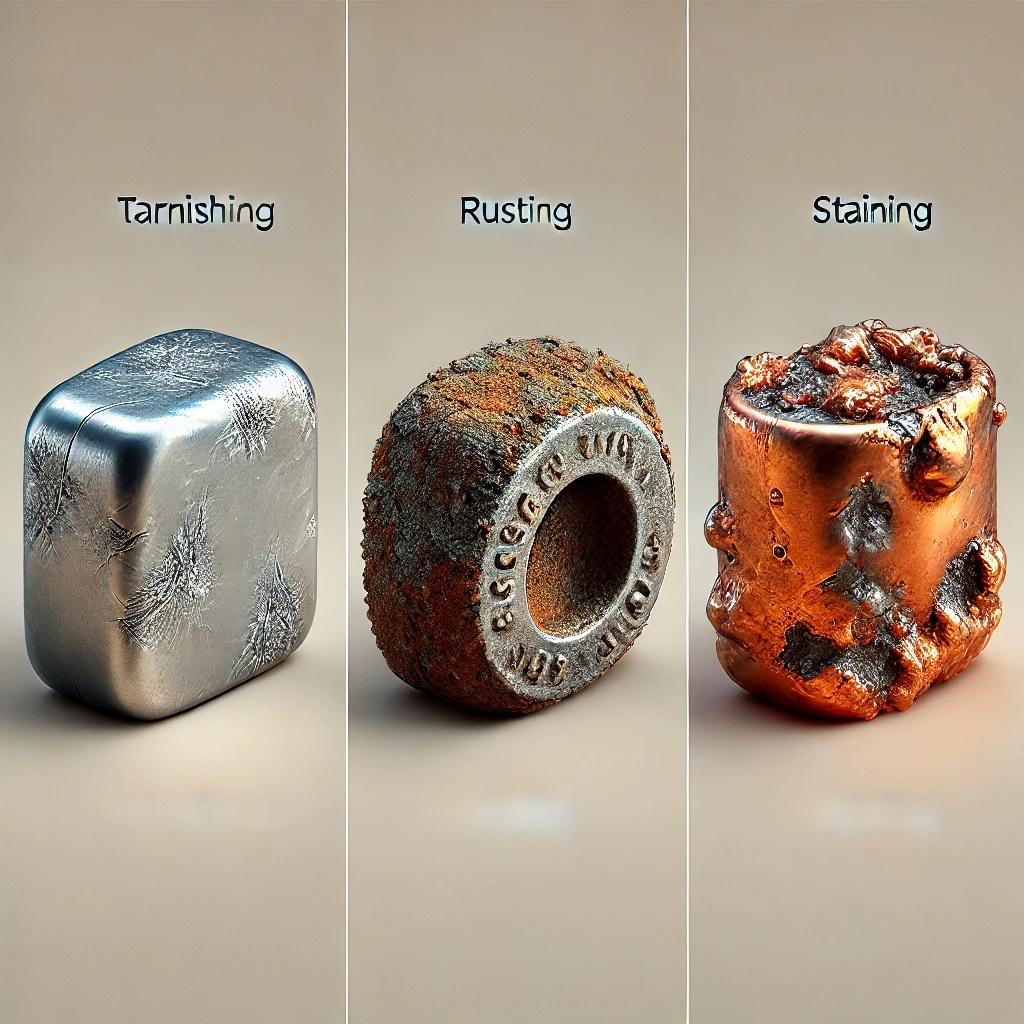
To understand what happens to gold over time, it’s essential to clarify the terms tarnishing, rusting, and staining. Rusting, as discussed, specifically refers to the oxidation of iron and doesn’t occur in gold. Tarnishing, on the other hand, is a form of corrosion that occurs on the surface of some metals, creating a dull or darkened layer. This is a particularly common issue with silver. While pure gold doesn’t tarnish, gold alloys (such as 18K or 14K gold, which include other metals) may tarnish over time, particularly when exposed to chemicals, moisture, or air.
Staining, or discoloration, can also happen when alloyed metals in gold jewellery react to external substances. For example, sweat, oils, or even certain chemicals in perfumes or lotions can react with the metals in gold alloys, causing staining. While tarnish tends to look dark or dull, staining can manifest as different colours, such as black, green, or even red, depending on the metals in the alloy and the nature of the reaction.
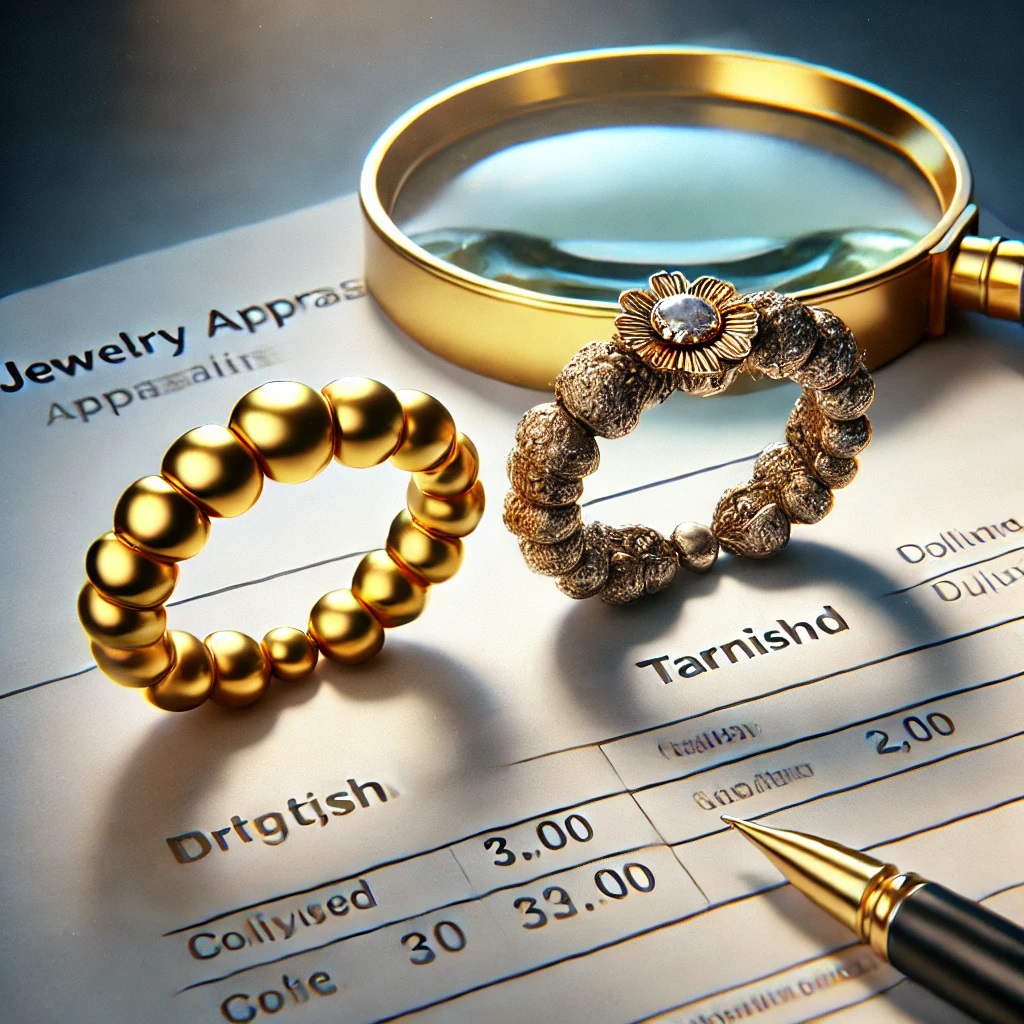
While tarnishing sounds like a bas thing, it doesn’t necessarily have a negative impact on your gold’s worth. While some styes of jewellery will undoubtedly benefit from tarnish removal, designs with a vintage accent can actually appear more authentic with tarnish. With the vintage look becoming increasingly popular, some tarnishing can be argued to enhance the pieces’ appeal and value.
Tarnishing is certainly less appealing on gold bars and coins. In theory, gold bars are generally made from 99.99% purity gold so are the least likely to tarnish. Many popular gold coins on the other hand are minted with 22 karat gold, like the Krugerrand and Sovereign. While many dealers will not value standard gold coins lower if showing signs of tarnish, more collectible coins may well suffer. That’s because its value relies more heavily on subjectivity linked to history, rarity and appeal.
Red spots, or small reddish discolorations, can appear on certain types of gold due to the presence of copper or other metals in the alloy. Lower-karat gold (such as 14K or 18K gold) often includes metals like copper to improve durability and reduce cost. However, copper is more reactive than gold, meaning it can oxidize when exposed to air and moisture, leading to reddish or orange spots on the surface of the gold piece.
These red spots are more likely to appear on jewellery or items that are frequently exposed to moisture, sweat, or chemicals. Over time, the oxidation of copper can become more visible, particularly in areas that receive the most wear. While these red spots don’t indicate rusting, they are a form of tarnish specific to the other metals in the gold alloy.
If you notice red spots on your gold, there are several ways to clean and prevent them from recurring. Here are some practical tips:
Use a soft, lint-free cloth to wipe down your gold jewellery regularly. This helps remove oils, moisture, and other substances that might contribute to tarnishing. Limiting handling of gold coins will minimise applying the oils present in our skin.
For a deeper clean, use a mixture of warm water and mild soap. Soak the item briefly, then gently scrub jewellery with a soft toothbrush and rinse with clean water. We tend to rub gold coins dry with a towel and avoid any abrasive scrubbing whatsoever.
Keep gold jewellery away from bleach, chlorine, and harsh household cleaners, as these can speed up the oxidation process, especially for copper-containing alloys.
For frequently worn pieces, consider a professional rhodium plating. This protective layer is often applied to white gold but can be used on other gold types to shield them from exposure to air and moisture.
When not wearing your gold items, store them in a cool, dry place. Use a fabric-lined jewellery box or pouch to prevent exposure to humidity and air, which can speed up oxidation in gold alloys.
Opting to store your gold coin and bar investments in professional vaults will ensure their condition and integrity is optimised. Most dealers will be able to provide storage options which include insurance of your investment.
Check out the latest prices
While pure gold is highly resistant to corrosion and tarnish, most gold items are actually made from gold alloys, which combine gold with other metals to improve strength, colour, and cost-effectiveness. These alloy metals, however, can introduce certain vulnerabilities that make gold jewellery susceptible to tarnishing and other forms of discoloration. Here, we’ll explore the key factors that can affect the appearance of gold over time, including the role of alloy metals, environmental influences, and everyday chemical reactions.
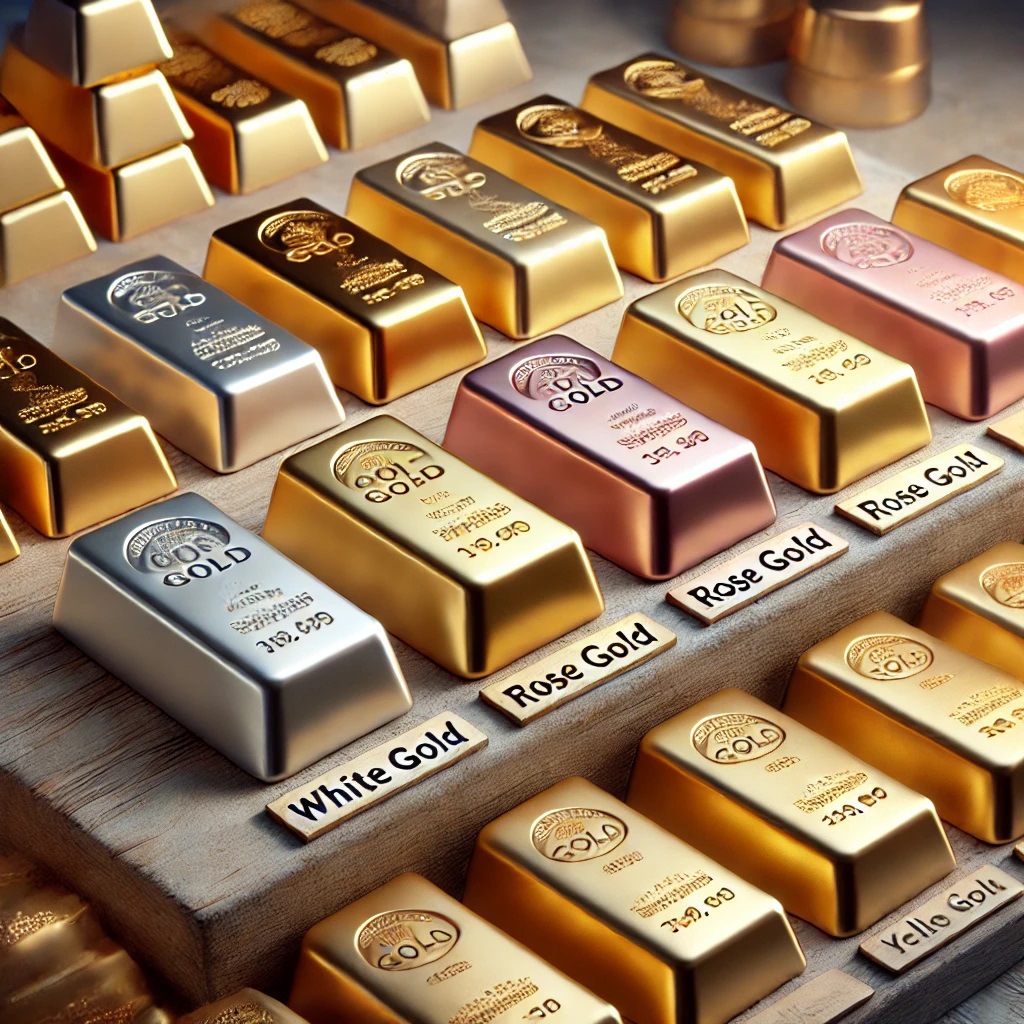
Pure gold, or 24-karat gold, does not tarnish, corrode, or discolour due to its stable atomic structure and resistance to oxidation. However, because pure gold is quite soft, it’s often alloyed with other metals to increase its durability. Common alloy metals in gold include copper, silver, nickel, and palladium, depending on its desired application.
The downside is that these alloy metals are more reactive than pure gold. For instance, copper in rose gold can oxidize over time, leading to a reddish or brownish tarnish. Similarly, silver in yellow gold alloys may develop a dull patina when exposed to air and moisture.
Therefore, the higher the percentage of alloy metals (e.g., in 14K gold versus 18K gold), the more likely the piece is to tarnish or show signs of discoloration.
Environmental exposure is another factor that can lead to tarnishing or corrosion in gold alloys. Elements such as air, moisture, and sunlight can all contribute to the oxidation of alloy metals, which leads to tarnish or discoloration. Humidity and exposure to saltwater (especially in coastal areas or during swimming) are particularly harsh on gold alloys, as they accelerate the oxidation process in metals like copper and silver.
Even air pollution can impact gold jewellery. For example, sulphur compounds in the air can react with silver in gold alloys, resulting in a tarnished or darkened appearance. This reaction is most noticeable in urban or industrial areas where air quality may be lower.
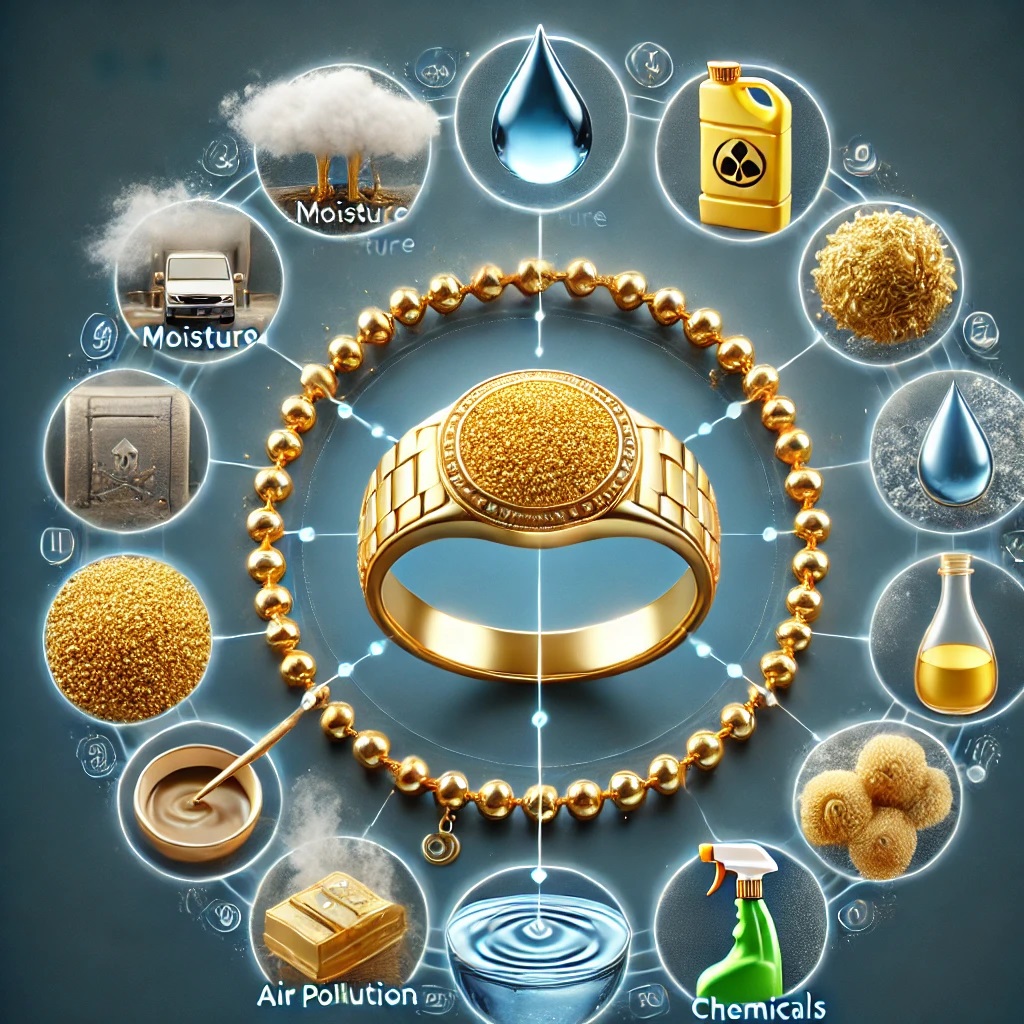
Everyday contact with skin, cosmetics, and household chemicals can also affect gold alloys. When gold comes into contact with skin, oils, sweat, and natural acids can react with alloy metals, sometimes leading to discoloration or tarnish. The extent of this reaction can vary based on individual skin chemistry; for example, people with more acidic skin may notice tarnish on their jewellery more quickly.
Additionally, products like lotions, perfumes, and hair sprays contain chemicals that can accelerate tarnishing. Chlorine, which is often found in pools and cleaning products, is especially harmful and can lead to discoloration, weakening, or even pitting in gold alloys over time. To minimize the risk of tarnish or corrosion, it’s best to remove gold jewellery before swimming, applying cosmetics, or using cleaning agents.
Yes, while pure gold doesn’t rust or corrode, it can still get scratched or dented due to its softness. Gold alloys, which contain other metals, may also tarnish or develop discoloration over time if exposed to moisture, chemicals, or rough handling.
Red spots on gold are typically caused by the oxidation of copper or other metals in gold alloys. Lower-karat gold (like 14K or 18K) contains copper, which can oxidize and form reddish discolorations over time when exposed to air and moisture.
Pure gold does not rust in salt water, but salt water can accelerate tarnishing in gold alloys. This is due to the oxidation of other metals in the alloy, such as copper or silver, which can corrode more easily in salty environments.
Yes, fake gold can rust, especially if it contains iron or other non-noble metals. Unlike pure gold, which is highly resistant to rust and corrosion, imitation gold made from cheaper metals can rust or tarnish when exposed to air and moisture.
Pure gold will not rust in water, as it’s a noble metal and resistant to oxidation. However, gold alloys that contain other metals may tarnish or discolour in water over time, particularly if they contain reactive metals like copper.
Pure gold will not rust over time due to its chemical stability. However, gold alloys may tarnish or show signs of discoloration, especially if they contain metals like copper or silver, which can oxidize over time when exposed to moisture or chemicals.
Pure gold doesn’t rust in chlorine, but chlorine can weaken and damage gold alloys over time. Exposure to chlorine, especially in swimming pools, can lead to tarnishing, discoloration, or even structural weakening in gold jewellery containing other metals.
14K gold does not rust, but it can tarnish due to the presence of other metals like copper or silver. These alloy metals can oxidize over time, especially when exposed to air, moisture, or chemicals, causing discoloration.
18K gold doesn’t rust, as gold itself doesn’t react with oxygen. However, the other metals in 18K gold may tarnish or discolour with exposure to moisture, air, or certain chemicals over time. Proper care helps prevent this tarnishing.
Live Gold Spot Price in Sterling. Gold is one of the densest of all metals. It is a good conductor of heat and electricity. It is also soft and the most malleable and ductile of the elements; an ounce (31.1 grams; gold is weighed in troy ounces) can be beaten out to 187 square feet (about 17 square metres) in extremely thin sheets called gold leaf.
Live Silver Spot Price in Sterling. Silver (Ag), chemical element, a white lustrous metal valued for its decorative beauty and electrical conductivity. Silver is located in Group 11 (Ib) and Period 5 of the periodic table, between copper (Period 4) and gold (Period 6), and its physical and chemical properties are intermediate between those two metals.